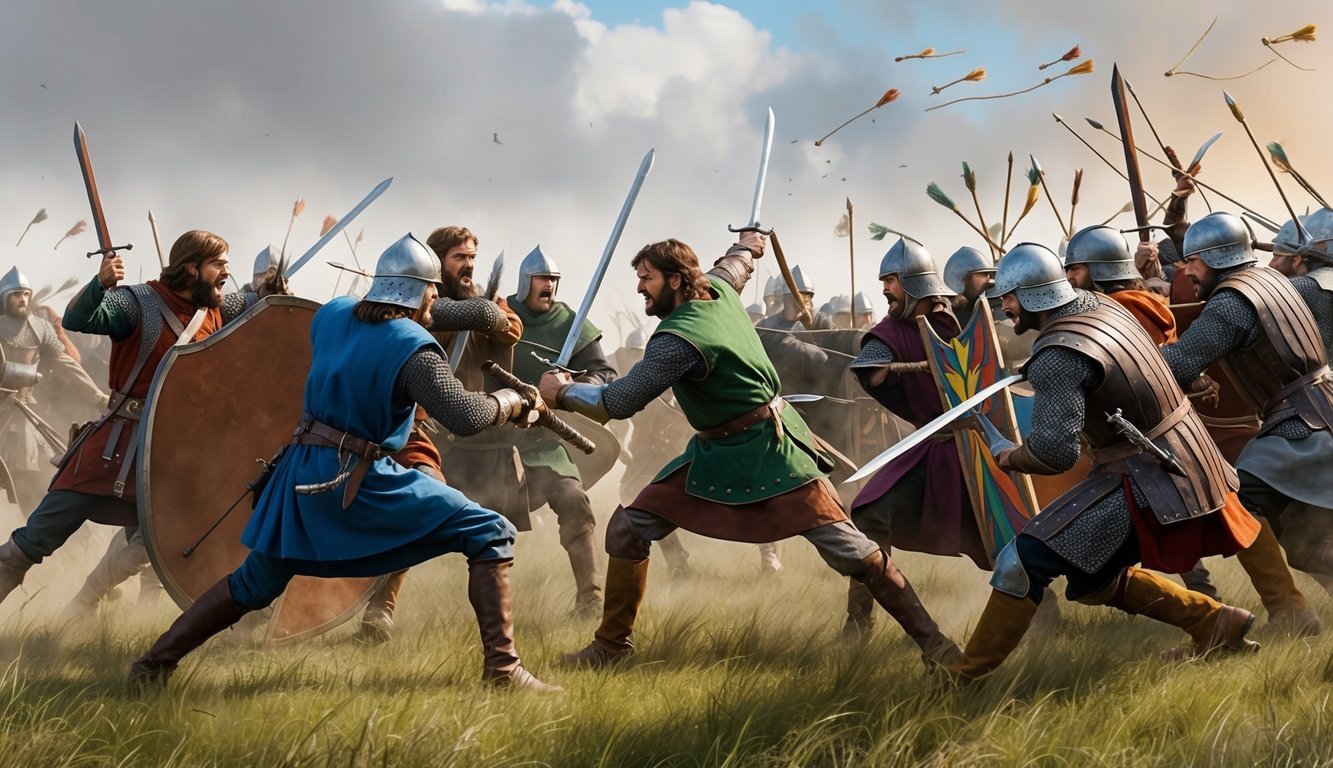Skirmish games offer a thrilling alternative to large-scale wargaming.
These compact battles let you dive into intense tactical action without the overwhelming model count of traditional tabletop warfare.
You’ll command a small force of 10-20 miniatures, making every unit crucial and every decision impactful.
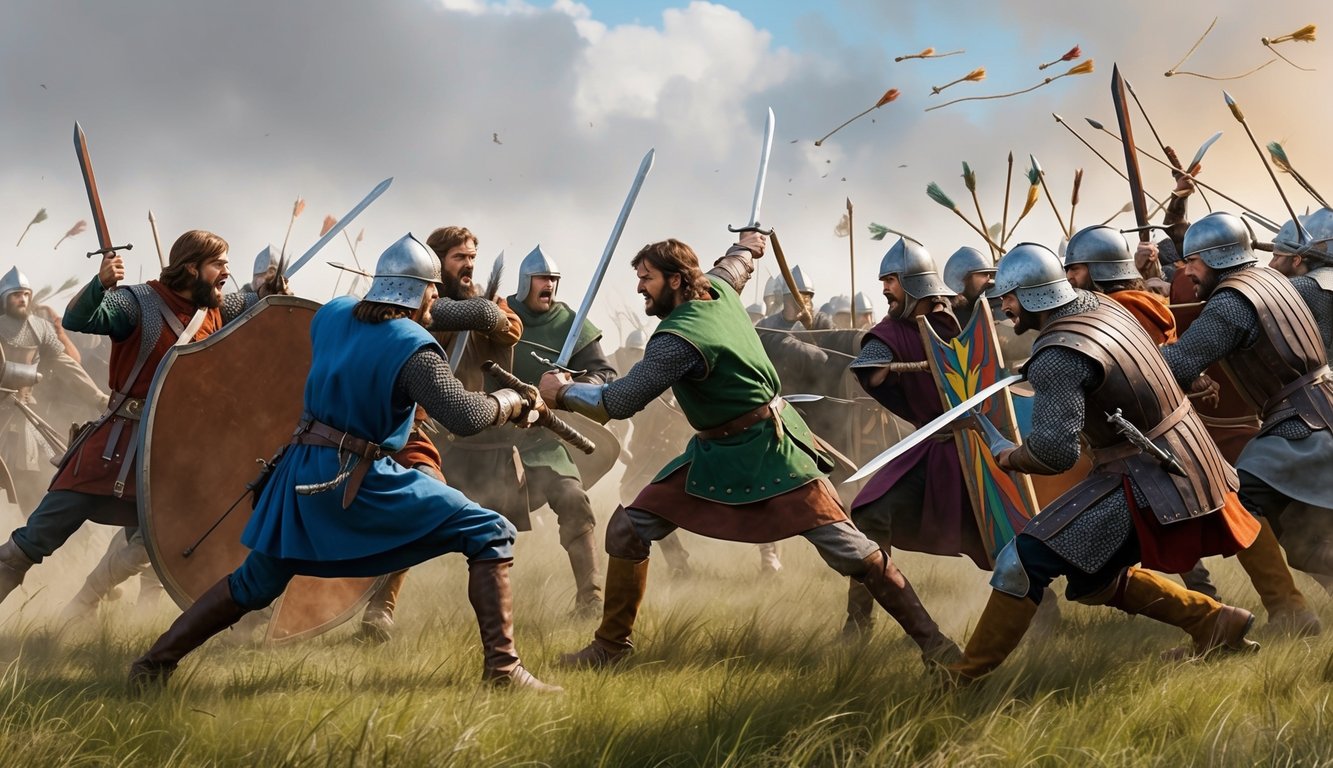
Skirmish games provide an accessible entry point for newcomers and a refreshing change of pace for veteran wargamers. They’re faster to set up, quicker to play, and easier on your wallet.
Popular titles like Malifaux and Warhammer: Underworlds showcase diverse themes from steampunk fantasy to classic Warhammer settings.
Don’t let the smaller scale fool you – these games pack a punch.
You’ll find deep strategy, rich narratives, and ample opportunities for customization.
Whether you’re battling with mechs in Battletech or commanding post-apocalyptic forces in Fallout: Wasteland Warfare, skirmish games offer endless possibilities for tactical fun.
Understanding Skirmish Games
Skirmish games offer fast-paced, tactical combat on a smaller scale than traditional wargames.
You’ll find them easy to learn but packed with strategic depth.
Many feature fantastical settings to spark your imagination.
Core Concepts
In skirmish games, you control a small band of fighters rather than massive armies.
Each model typically represents a single character with unique abilities.
Turns are quick, keeping you engaged throughout the game.
You’ll make tactical decisions about movement, combat, and special actions.
Resource management plays a key role.
You might balance things like action points, energy, or cards to activate your units.
Most skirmish games use terrain to add depth.
Positioning becomes crucial as you seek cover or vantage points.
Popular Genres
Fantasy skirmish games let you command wizards, warriors, and mythical beasts.
You might lead a warband through magical ruins or battle for control of arcane artifacts.
Sci-fi settings offer high-tech weapons and alien races.
Picture cybernetic soldiers clashing on distant planets or aboard derelict spaceships.
Historical skirmishes recreate small-scale conflicts from various eras.
You could lead a band of Vikings or command a squad of World War II soldiers.
Post-apocalyptic games pit survivors against mutants and raiders.
Scavenging for resources often factors into gameplay.
Superhero skirmishes let you assemble a team of costumed crime-fighters.
These tend to be especially colorful and dynamic.
Key Elements of Skirmish Games
Skirmish games have some essential components that make them unique and exciting.
These elements create the tactical depth and immersive experience players love.
Miniatures and Terrain
You’ll find miniatures at the heart of most skirmish games.
These small figures represent your units on the battlefield.
They come in various scales, but 28mm is popular.
You can paint them to add personality and flair to your force.
3D printing has revolutionized miniature creation.
You can now design and print custom units at home.
This opens up endless possibilities for unique armies.
Terrain is crucial too.
It provides cover and tactical options.
You might use pre-made pieces or craft your own.
Hills, buildings, and forests add depth to the battlefield.
Game Mechanics
The rules drive the action in skirmish games.
You’ll typically activate units one at a time, moving and fighting.
This creates a back-and-forth flow that keeps both players engaged.
Combat often uses dice rolls to determine outcomes.
You might roll to hit, then to wound, and your opponent might get a save roll.
This adds an element of chance to your tactics.
Resource management is key.
You’ll need to balance actions, special abilities, and positioning.
Some games use cards or tokens to track resources.
Customization is a big draw.
You can often build unique squads or upgrade individual units.
This lets you tailor your force to your playstyle.
Leading Titles in Skirmish Gaming
Skirmish games offer intense, small-scale battles that are easy to get into.
You’ll find a variety of popular titles that cater to different tastes and settings.
Warhammer 40,000
You’ll love the grim darkness of the far future in Warhammer 40,000.
This sci-fi skirmish game lets you command small squads of elite troops.
Games Workshop’s flagship game offers deep tactical gameplay.
You can choose from a wide range of factions, each with unique units and strategies.
Painting and customizing your miniatures is a big part of the hobby.
The detailed models and rich lore make it easy to get immersed in the 40k universe.
Regular updates and new releases keep the game fresh.
You’ll always have new tactics to try and units to collect.
Necromunda
Set in the underhive of a massive industrial world, Necromunda brings gang warfare to your tabletop.
You’ll lead a small gang of fighters in brutal turf wars.
Each model has its own skills and equipment, making them feel like unique characters.
Campaign play is a highlight.
Your gang members gain experience and injuries over time, telling their own stories.
The vertical terrain and tight corridors create tense, close-quarters battles.
You’ll need to think carefully about positioning and line of sight.
Infinity
Infinity drops you into a high-tech future of cyberpunk warfare.
This game is known for its deep tactical gameplay and reactive turn system.
You’re always involved in the action, even during your opponent’s turn.
The game uses a unique “ARO” system that lets you react to enemy movements.
The miniatures are highly detailed and full of character.
You’ll find a diverse range of factions inspired by different cultures and sci-fi tropes.
Hacking and high-tech gadgets add another layer to the gameplay.
You’ll need to balance firepower with information warfare to succeed.
Age of Sigmar
If fantasy is more your style, Age of Sigmar offers epic battles in the Mortal Realms.
While it’s a larger-scale game, you can easily play smaller skirmishes.
You’ll command mighty heroes and mythical creatures.
The game’s simple rules make it easy to learn, but there’s plenty of depth to master.
Painting the models is a joy, with lots of room for creativity.
You can create stunning, colorful armies that really stand out on the table.
Regular updates and new factions keep the game exciting.
You’ll always have new strategies to explore and units to try out.
Gameplay Tactics and Strategy
Skirmish games require smart planning and quick thinking.
You’ll need to master both strategy and tactics to outmaneuver your opponent on the battlefield.
Strategic Planning
In skirmish games, you’ll want to think several moves ahead.
Consider your overall objectives and how to best position your units.
Analyze the terrain and use cover to your advantage.
Look for choke points where you can funnel enemy forces.
Create overlapping fields of fire to maximize your damage output.
Always have a backup plan in case your initial strategy falls apart.
Don’t forget about resource management.
Decide when to be aggressive and when to play defensively based on your available units and supplies.
Alternate Activations
Many skirmish games use an alternate activation system.
This means you and your opponent take turns activating individual units or small groups.
This back-and-forth creates a dynamic, reactive gameplay experience.
You’ll need to anticipate your opponent’s moves and adapt your plans on the fly.
Prioritize which units to activate first.
Sometimes it’s best to react to your opponent, other times you’ll want to seize the initiative.
Look for opportunities to combo activations between complementary units.
Timing is crucial.
Activating in the right order can set up devastating attacks or clutch defensive plays.
Building a Skirmish Campaign
Skirmish campaigns offer an exciting way to link individual battles into an ongoing narrative.
They provide a sense of progression and allow you to develop your forces over time.
Campaign Structure
Start by outlining the overall arc of your campaign.
Define the major plot points and decide how many games you’ll need to reach the climax.
Create a mix of linked scenarios that build upon each other.
You might begin with a reconnaissance mission, followed by a raid to secure resources, and culminate in a final showdown.
Consider using a branching structure where the outcome of each game influences future scenarios.
This adds replay value and keeps things unpredictable.
Don’t forget to include side quests or optional objectives that can unlock special rewards or units.
Continuing Sagas
Keep your players invested by carrying over consequences from one game to the next.
Let injuries persist, forcing tough choices about whether to field wounded troops.
Introduce a simple experience system where units can gain new skills or equipment as they survive battles.
Track resources between games, adding a strategic layer to your campaign.
You might have your forces scavenging for supplies or competing over limited magical artifacts.
Create rivalry and alliances between factions that evolve based on in-game actions.
Remember to leave room for player-driven narratives.
Let your group’s choices shape the story, creating a unique experience that feels personal to your gaming group.
The Role of Expansions and Updates
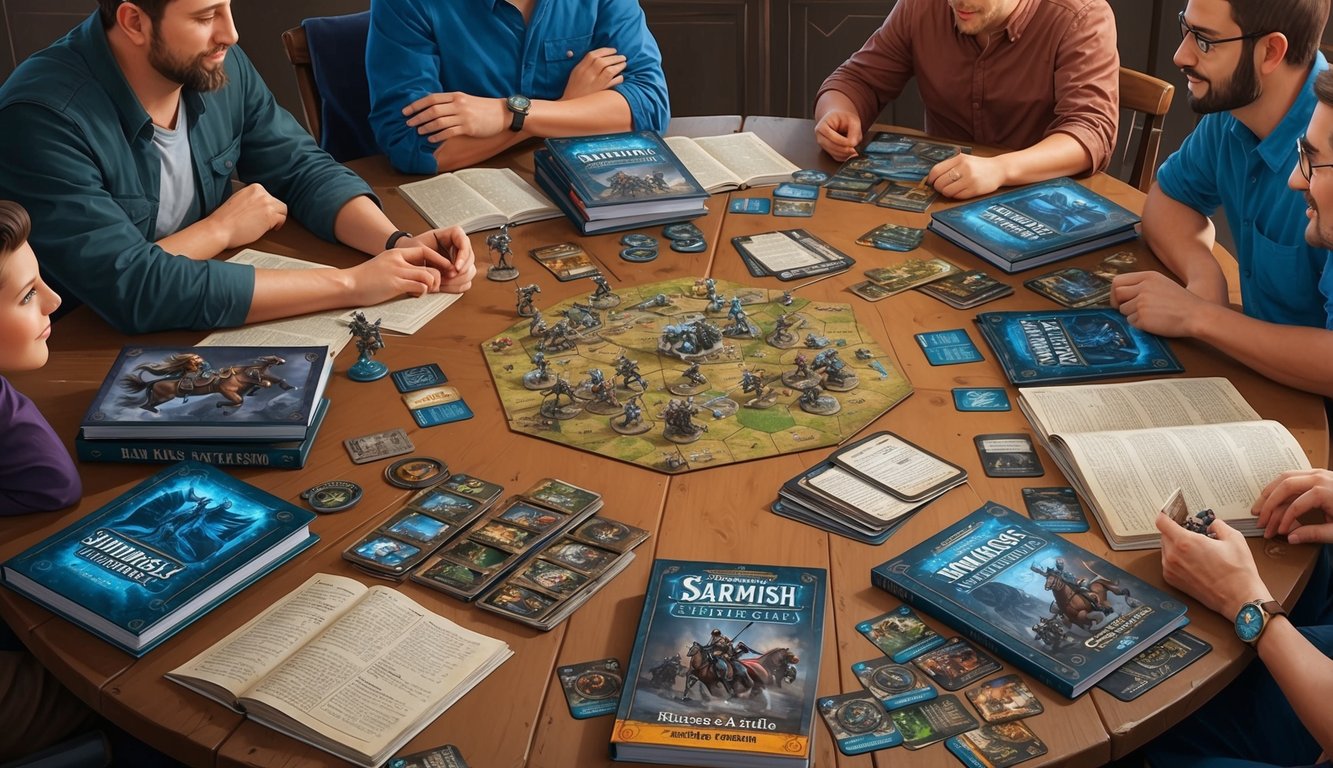
Expansions and updates are crucial for keeping skirmish games fresh and engaging.
They introduce new content, refine gameplay mechanics, and provide opportunities for players to deepen their involvement with the game.
Keeping It Fresh
Expansions breathe new life into your favorite skirmish games.
You’ll find new units, scenarios, and even game modes that shake up the existing meta.
For example, Mutant Year Zero: Zone Wars – Robots & Psionics adds linked campaign missions to the base game.
This gives you more ways to play and keeps things exciting.
New miniatures and terrain pieces often come with expansions too.
These not only look cool on your tabletop but also add tactical depth to your battles.
You might suddenly have to account for towering structures or deal with never-before-seen enemy types.
Rules updates can fix balance issues or streamline gameplay.
These tweaks help maintain a fair and fun experience for everyone involved.
Community Engagement
Expansions create buzz in the skirmish game community.
You’ll find yourself discussing new strategies, sharing paint jobs of fresh miniatures, and organizing events around the latest content.
Game designers often use community feedback to shape future expansions.
Your input can directly influence the direction of the game you love.
This back-and-forth between players and creators fosters a sense of ownership and investment in the game’s growth.
Tournaments and leagues frequently incorporate new expansions, giving you reasons to stay active in the competitive scene.
You’ll face fresh challenges and have opportunities to show off your skills with the latest units and tactics.
Community and Fan-Driven Content
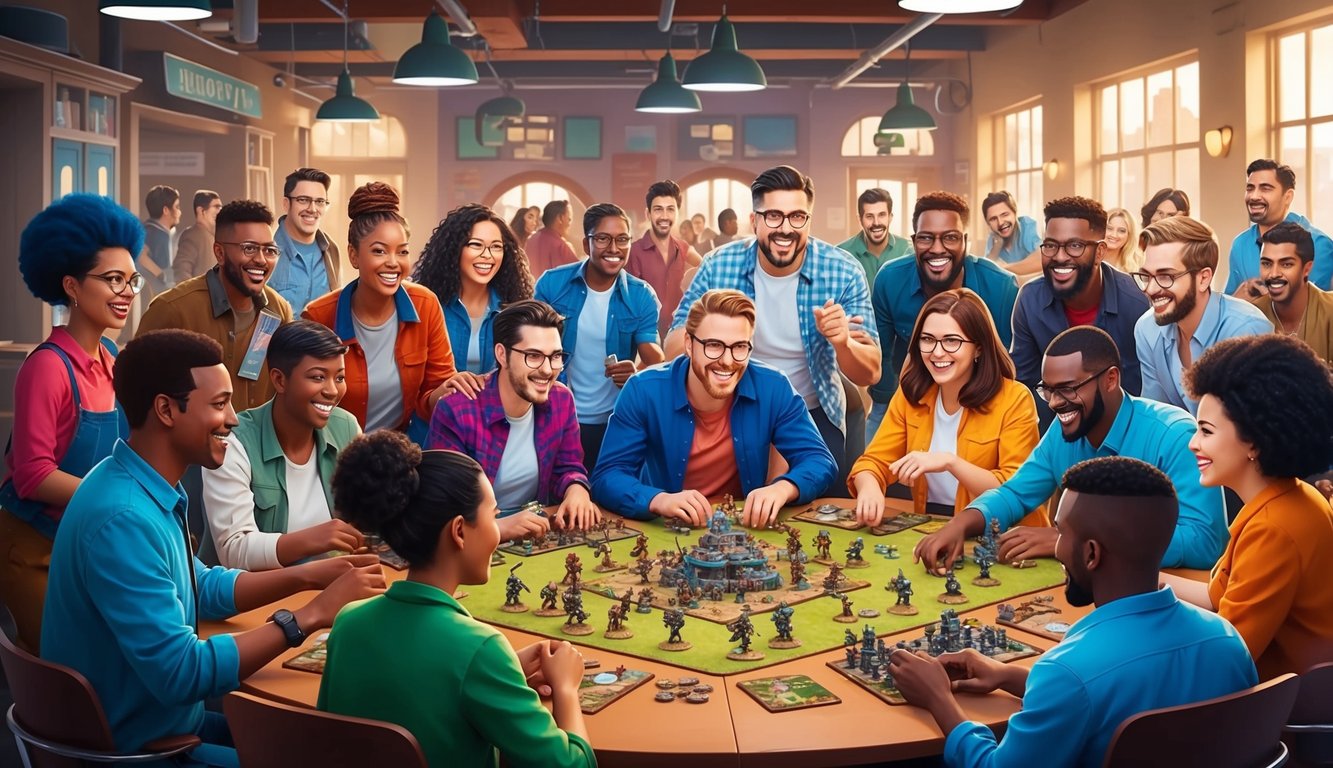
Skirmish games thrive on passionate communities that create and share content.
You’ll find a wealth of fan-made resources to enhance your gaming experience, from crowdfunded projects to free downloadable materials.
Kickstarter Projects
Kickstarter has become a hub for indie skirmish game developers.
You can discover unique projects like “Reality’s Edge,” a cyberpunk skirmish game that gained traction through crowdfunding.
These campaigns often offer exclusive miniatures, rulebooks, and expansions.
Many successful Kickstarter projects evolve into full-fledged game lines.
You might stumble upon the next big thing in skirmish gaming before it hits mainstream popularity.
Keep an eye out for campaigns that align with your interests.
Some offer early bird specials or limited edition items you won’t find elsewhere.
Free PDFs and Resources
The skirmish gaming community is known for its generosity.
You can find a treasure trove of free PDFs and resources online.
These often include quick-start rules, army lists, and scenario packs.
Fan-made content ranges from simple stat cards to elaborate campaign settings.
You’ll discover terrain templates, painting guides, and even custom miniature designs ready for 3D printing.
Many game developers release free “lite” versions of their rules.
This lets you try before you buy and get a feel for different systems without spending a dime.
OPR System
One Page Rules (OPR) has revolutionized accessible wargaming.
You get streamlined rulesets for various genres, all condensed into easy-to-understand formats.
OPR offers both free and premium content.
Their basic rules are available at no cost, making it simple for you to jump into a game.
The premium versions include advanced rules and army lists.
The system’s flexibility allows you to use any miniatures you own.
This makes OPR an excellent choice if you’re looking to repurpose existing collections or mix different ranges.
OPR’s community actively contributes homebrew content, expanding the game’s possibilities.
You’ll find fan-made army lists, scenarios, and even entire game modes to keep things fresh.
Collecting and Customizing Miniatures
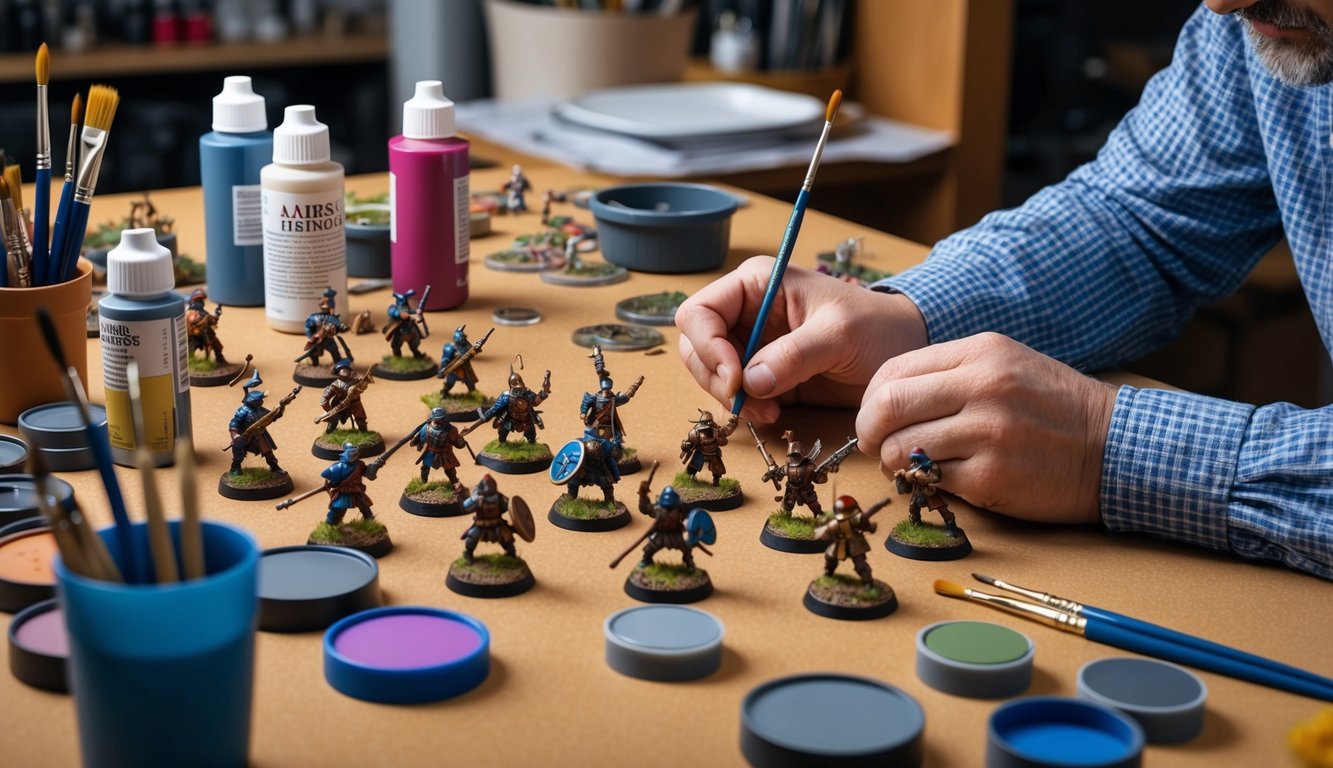
Assembling and personalizing miniatures is a key part of skirmish gaming.
You’ll find it’s a rewarding hobby that lets you express your creativity while building unique armies.
The Art of Assembly
Putting together miniatures takes patience and skill.
You’ll need to carefully remove parts from sprues, clean mold lines, and glue pieces together.
Plastic kits are beginner-friendly, while metal and resin models offer more detail but can be trickier.
3D printing has opened up new possibilities.
You can print custom parts or even entire miniatures at home.
This gives you nearly endless options to make your forces stand out.
Consider magnetizing arms and weapons.
It lets you swap loadouts easily between games.
You might also want to create scenic bases to give your minis more character.
Painting and Personalization
Painting brings your miniatures to life.
Start with a primer to help paint stick.
Then build up layers of color, from base coats to highlights.
Dry brushing and washes are great techniques to add depth and shading.
You can follow official color schemes or create your own.
Experiment with different paint brands and tools.
Airbrushes speed up base coating large areas, while fine detail brushes help with tiny features.
Add personal touches like battle damage, freehand designs, or custom decals.
These make your minis unique.
Don’t forget to seal your work with varnish to protect the paint job.
Remember, practice makes perfect.
Your skills will improve with each model you paint.
The Magic of Skirmish: Fantasy and Spells
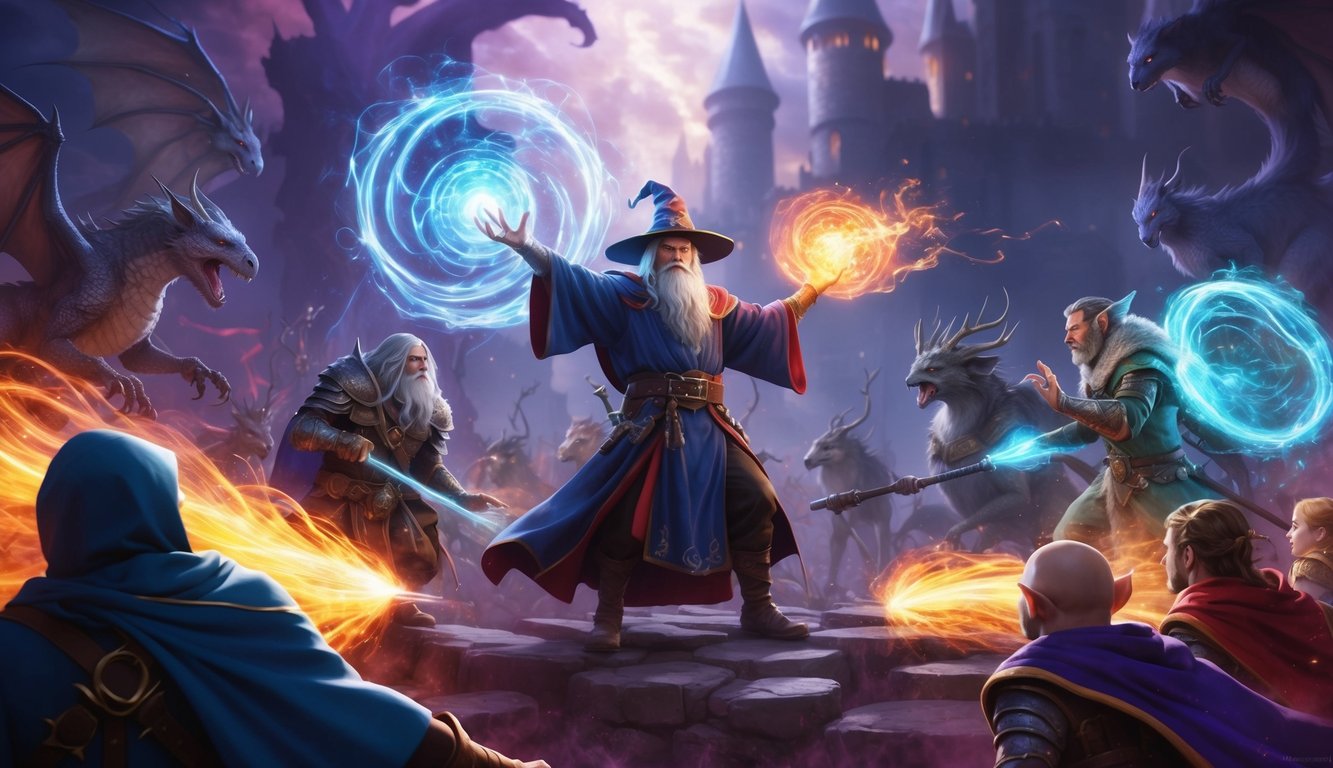
Fantasy skirmish games transport you to magical realms filled with diverse races and mystical powers.
You’ll unleash arcane energies and command mythical creatures in thrilling small-scale battles.
Fantasy Settings and Races
In fantasy skirmish games, you’ll explore richly imagined worlds teeming with unique races and cultures.
You might lead a band of stalwart dwarves defending their mountain stronghold or guide a troupe of mischievous goblins on a raid.
Many games draw inspiration from classic fantasy tropes, offering familiar races like elves, orcs, and humans.
Others push creative boundaries with more exotic options.
You could find yourself commanding anthropomorphic animals or even dinosaurs in some settings.
These diverse races often come with their own special abilities and playstyles.
Nimble wood elves might excel at ranged combat, while sturdy trolls regenerate wounds mid-battle.
Spellcasting Systems
Magic is the heart of fantasy skirmish games, and you’ll find a wide variety of spellcasting systems to master.
Some games offer predefined spell lists for wizard characters, while others let you craft custom magical effects.
Common magical abilities include:
- Fireballs and lightning bolts for direct damage
- Healing and protective wards for support
- Summoning creatures to fight alongside you
- Mind control to turn enemies against each other
Spellcasting often comes with risks and limitations.
You might need to roll dice to see if a spell succeeds or manage a pool of magical energy.
Some games even feature the possibility of magical mishaps, adding an element of unpredictability to your arcane exploits.
Special Features in Skirmish Games
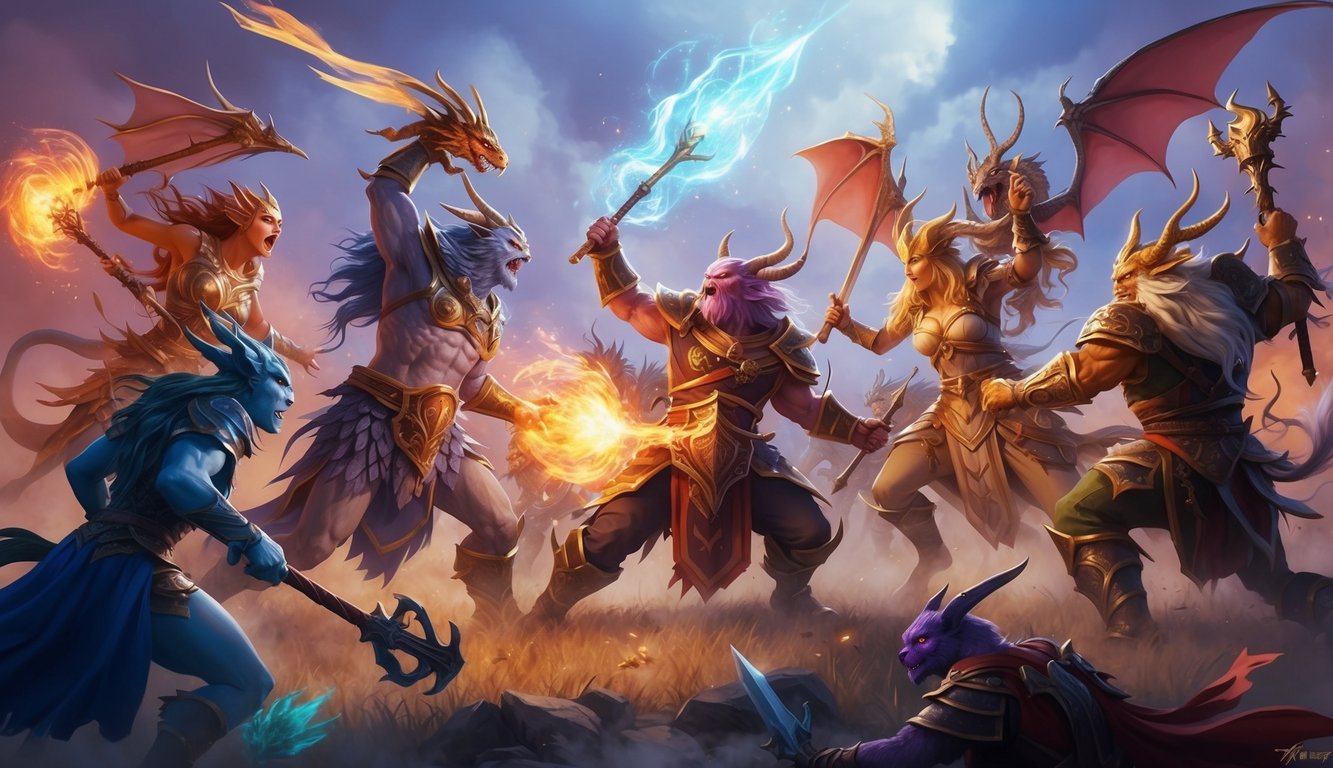
Skirmish games offer unique elements that set them apart from larger-scale wargames.
These features add excitement and strategic depth to your gameplay experience.
Treasure and Rewards
In many skirmish games, you’ll find treasure hunting as a core mechanic.
Frostgrave, for example, lets you search for magical artifacts and gold coins during battles.
You’ll need to balance combat with exploration to maximize your gains.
Some games reward you with experience points or upgrades for your warriors after each match.
This progression system keeps you coming back for more, as you build up your warband’s strength over time.
Unique Gameplay Mechanisms
Skirmish games often introduce innovative mechanics to spice up your battles.
Warhammer: Underworlds uses a deck-building element, where you customize your warband’s abilities and tactics before each game.
You’ll find games with alternating activations, allowing for more back-and-forth action.
Some titles incorporate terrain interactions, letting you use the environment to your advantage.
These special rules create dynamic, fast-paced encounters that keep you on your toes.
Finding and Joining the Skirmish Community
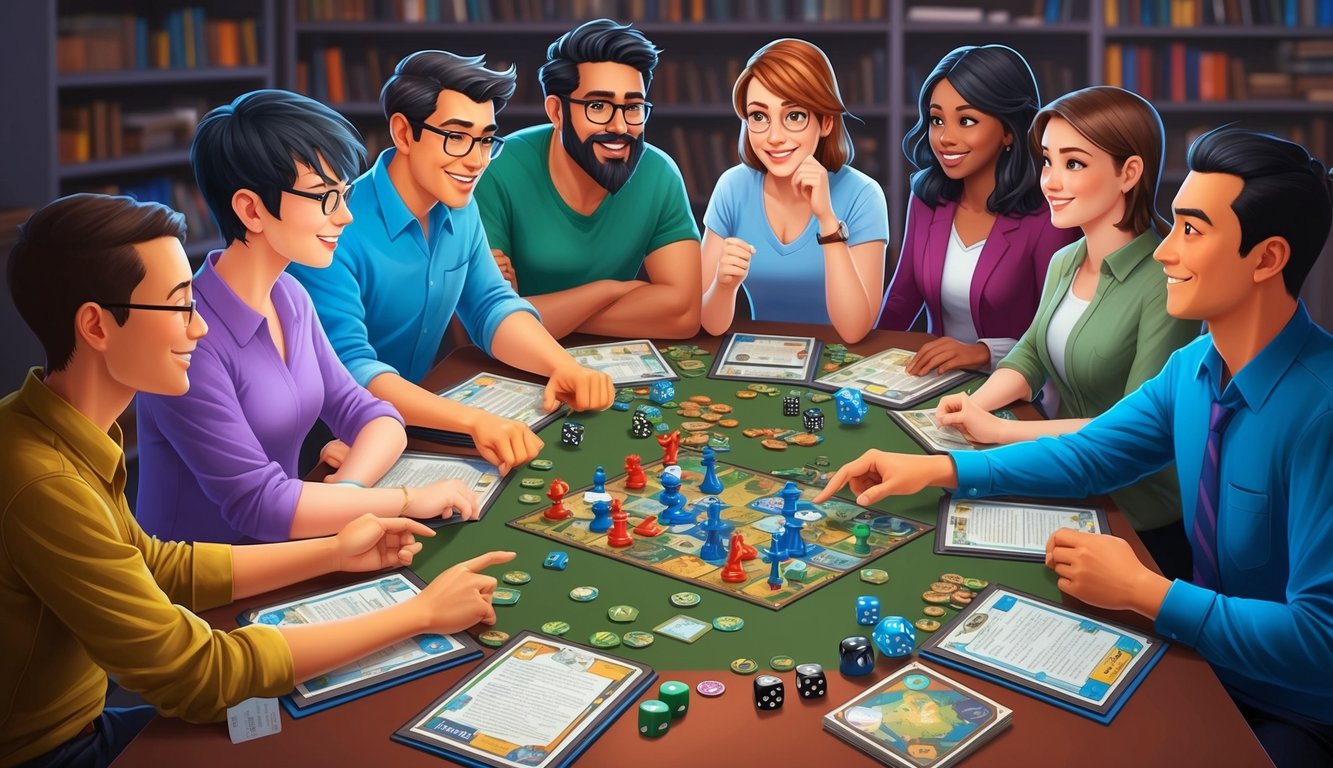
Connecting with other skirmish game enthusiasts can enhance your gaming experience.
You’ll find opportunities to play, learn, and share your passion both locally and online.
Local gaming groups
Check out your nearest hobby shops and game stores.
Many host regular skirmish game nights or tournaments.
You can usually find information about these events on store websites or bulletin boards.
Don’t be shy – introduce yourself to other players and ask about their favorite games.
Game clubs at schools or community centers are also great places to meet fellow enthusiasts.
If you can’t find an existing group, consider starting your own.
Post flyers or create social media events to attract like-minded gamers in your area.
Online Forums and Social Media
The internet is a goldmine for skirmish gaming communities.
Reddit has several active subreddits dedicated to specific games and miniature wargaming in general.
Facebook groups like the “40K Skirmish Community” offer spaces to discuss Games Workshop titles and other small-scale games.
Discord servers are popular for real-time chats and organizing online matches.
Many game manufacturers, including Games Workshop, have official forums where you can get rules clarifications and connect with other fans.
Don’t forget YouTube and Twitch – watching live games and tutorials can help you improve your skills and find new gaming buddies.

